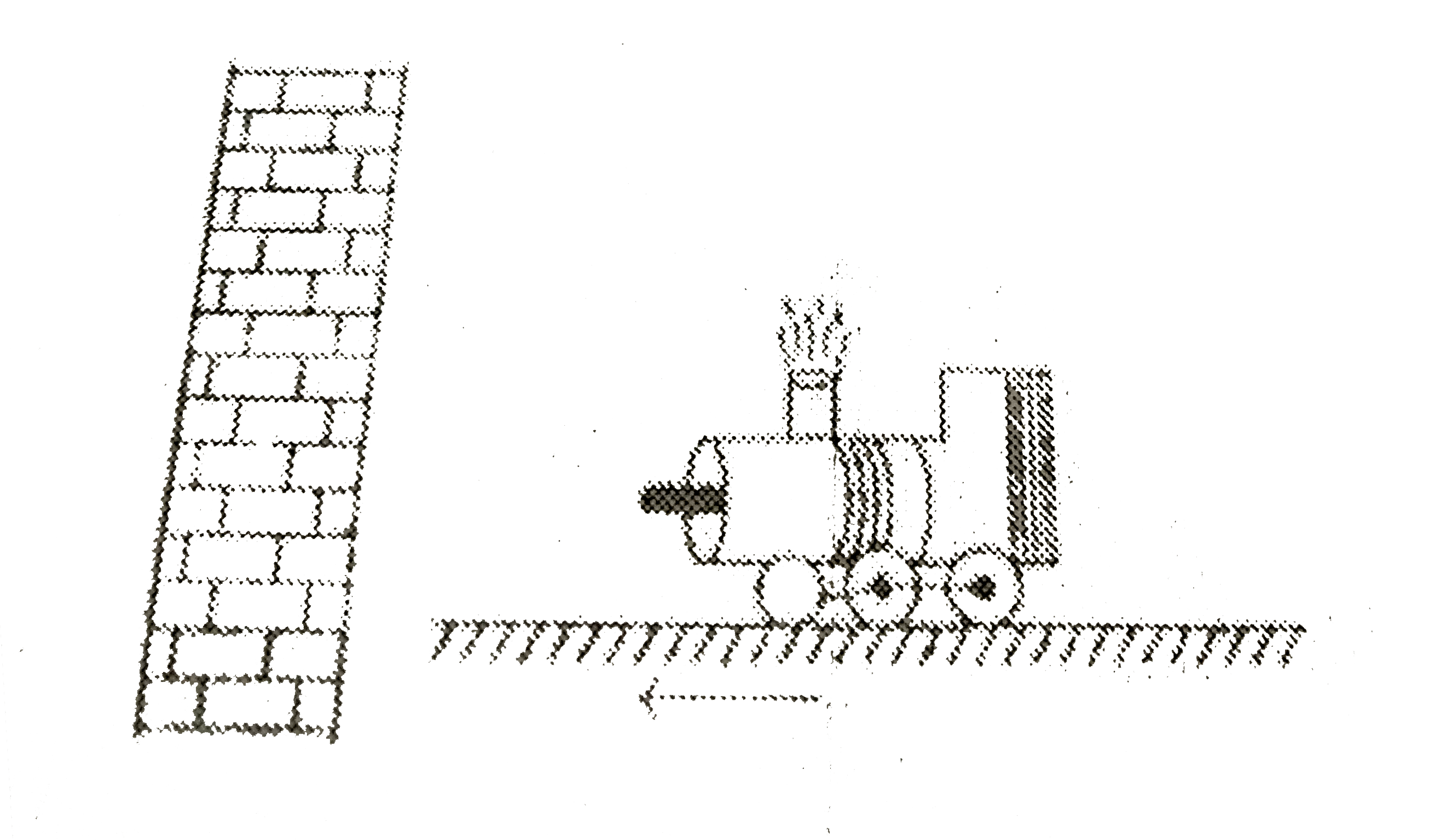The driver of a car approaching a vertical wall notices that the frequency of the horn of his car changes from 400 Hz to 450 Hz after being reflected from the wall. Assuming speed of sound to be 340ms, the speed of approach of car towards the wall is
10ms
20ms
30ms
40ms
The correct Answer is:C
To solve the problem of finding the speed of approach of the car towards the wall, we can use the Doppler effect formula for sound waves. Here’s a step-by-step solution:
Step 1: Understand the Doppler Effect Formula
When a source of sound (the car horn) is moving towards a stationary observer (the wall), the frequency observed after reflection can be calculated using the formula:
f′=f⋅V+VsV−Vs
where:
- f′ = observed frequency after reflection (450 Hz)
- f = emitted frequency (400 Hz)
- V = speed of sound (340 m/s)
- Vs = speed of the source (car) towards the wall (to be determined)
Step 2: Substitute Known Values
We can substitute the known values into the formula:
450=400⋅340+Vs340−Vs
Step 3: Simplify the Equation
To simplify, we first divide both sides by 400:
450400=340+Vs340−Vs
This simplifies to:
98=340+Vs340−Vs
Step 4: Cross-Multiply
Now we cross-multiply to eliminate the fraction:
9(340−Vs)=8(340+Vs)
Step 5: Expand Both Sides
Expanding both sides gives us:
3060−9Vs=2720+8Vs
Step 6: Combine Like Terms
Now, we can combine like terms:
3060−2720=9Vs+8Vs
340=17Vs
Step 7: Solve for Vs
Now, we can solve for Vs:
Vs=34017=20 m/s
Conclusion
The speed of approach of the car towards the wall is 20 m/s.
When a source of sound (the car horn) is moving towards a stationary observer (the wall), the frequency observed after reflection can be calculated using the formula:
f′=f⋅V+VsV−Vs
where:
- f′ = observed frequency after reflection (450 Hz)
- f = emitted frequency (400 Hz)
- V = speed of sound (340 m/s)
- Vs = speed of the source (car) towards the wall (to be determined)
We can substitute the known values into the formula:
450=400⋅340+Vs340−Vs
To simplify, we first divide both sides by 400:
450400=340+Vs340−Vs
This simplifies to:
98=340+Vs340−Vs
Now we cross-multiply to eliminate the fraction:
9(340−Vs)=8(340+Vs)
Expanding both sides gives us:
3060−9Vs=2720+8Vs
Now, we can combine like terms:
3060−2720=9Vs+8Vs
340=17Vs
Now, we can solve for Vs:
Vs=34017=20 m/s
The speed of approach of the car towards the wall is 20 m/s.
Topper's Solved these Questions
- SOUND WAVES AND DOPPLER EFFECTBook:CENGAGE PHYSICS ENGLISHChapter:SOUND WAVES AND DOPPLER EFFECTExercise:Multiple Correct
Explore 44 Videos
- SOUND WAVES AND DOPPLER EFFECTBook:CENGAGE PHYSICS ENGLISHChapter:SOUND WAVES AND DOPPLER EFFECTExercise:Assertion-Reasoning
Explore 24 Videos
- SOUND WAVES AND DOPPLER EFFECTBook:CENGAGE PHYSICS ENGLISHChapter:SOUND WAVES AND DOPPLER EFFECTExercise:Subjective
Explore 56 Videos
- RIGID BODY DYNAMICS 2Book:CENGAGE PHYSICS ENGLISHChapter:RIGID BODY DYNAMICS 2Exercise:Interger
Explore 2 Videos
- SUPERPOSITION AND STANDING WAVESBook:CENGAGE PHYSICS ENGLISHChapter:SUPERPOSITION AND STANDING WAVESExercise:Comprehension Type
Explore 5 Videos
Similar Questions
A driver in a car , approaching a vertical wall notices that the frequency of his car horn , has changed form 440 Hz to 480 Hz , when it gets reflected form the wall . If the speed of the sound in are 345 m/s , then the speed of the car is :
View SolutionThe driver of as car approaching a vertical wall notices that the frequency of his car's horn charges from 440 Hz to 480 Hz when it gets reflected from the wal. Find the speed of the car if that of the sound is 330ms−1.
View Solution
Knowledge Check
A stationary source is emitting sound at a fixed frequency f0, which is reflected by two cars approaching the source. The difference between the frequencies of sound reflected from the cars is 1.2% of f0. What is the difference in the speeds of the cars (in km per hour) to the nearest integer ? The cars are moving at constant speeds much smaller than the speed of sound which is 330ms−1.
A2B3C5D7
The driver of a bus approaching a big wall botices that the frequency of his bus's horn changes from 420 Hz to 490 Hz when he hears it after it gets reflected from the wall. Find the speed of the bus if speed of the sound is 330 ms−1.
View SolutionThe driver of a car travelling with speed 30ms−1 towards a hill sounds a horn of frequency 600 Hz. If the velocity of sound in air is 330ms−1, the frequency of reflected sound as heard by driver is
View SolutionAn engine driver moving towards a wall with velocity of 50ms−1 emits a note o frequency 1.2kHz. The frequyency of note after reflection from the wall is eard by the engine driver when speed of sound in air is 350ms−1 is

View SolutionAn ideal organ pipe resonates at successive frequencies of 50Hz,150Hz,250Hz , etc. ( speed of sound =340m/s) The pipe is
View SolutionA car is moving towards a fixed wall, it blows form of frequency of 440Hz . The frequency of reflected sound observed by the driver is 480Hz then find the speed of car in km/hr. (Speed of sound is 350msec
View SolutionA car moving with a speed of 30ms−1 is approaching a factory whistle having the frequency 700 Hz. Calculate the apparent pitch of the whistle as heard by the driver of the car ? (Velocity of sound = 350m/s)
View SolutionA motor car is approaching towards a crossing with a velocity of 72 km h−1 . The frequency of the sound of its horn as heard by a policeman standing on the crossing is 260 Hz. The frequency of horn is
View Solution